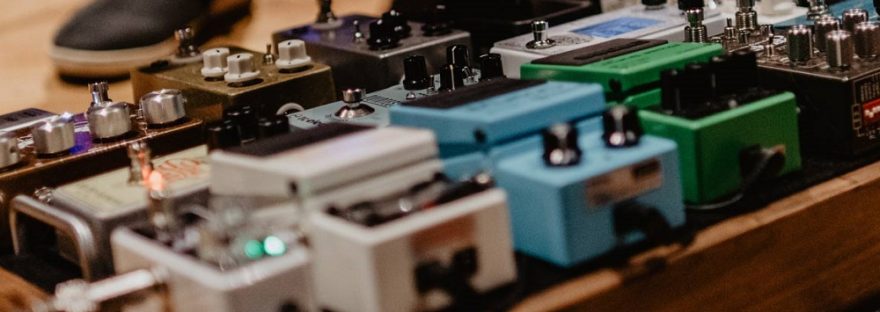Overdrive pedals are one of the most commonly used pedals in the wonderful world of guitar effects. They belong to the gain staging type together with such pedals as clean boost pedals, compression pedals, and volume control pedals. Gain staging refers to how one would set up, or stage, different gains together.
Overdrive pedal effect
So how does an overdrive pedal sound like? The easiest way to explain it is to compare the sound to a distorted amplifier. The sound actually has its origins in old amplifiers that would distort a signal when turned up to higher volumes. An overdrive pedal simulates that sound. This results in having the original guitar sound kind of fuzzy and gritty. It’s definitely not a clear sound.
The level of distortion depends on the pedal settings. You can go for a light muddiness in your sound or make it straight unbearable to listen to. That distortion has become a signature sound of many music genres, from Chicago blues to punk rock and heavy metal.
History of overdrive
The distortion effect was first ‘discovered’ when amplifiers from the first half of the 20th century would be turned up into the so-called overdrive. This is when an amplifier has its gain increased beyond the limits set by the producer, resulting in the distinctive distortion. Originally thought to be an earsore, with time some musicians started to appreciate the effects that could be gained by cranking up the amp and started to do it on purpose. Many blues guitarists in the 50s would add this effect into their repertoire. Soon, other rock guitarists followed.
In the next decade, makers were searching for a way to imitate that sound effect so that people wouldn’t break their amplifiers while trying to achieve overdrive. First overdrive medals were released. Many prominent musicians, such as Jimi Hendrix, Carlos Santana, or Keith Richards began using overdrive in their music. “Interstellar Overdrive”, a classic amongst the fans of Pink Floyd, was composed entirely with the overdrive effect. Overdrive became a staple in the world of rock.
Shopping for overdrive pedals
Modern overdrive pedals allow the player to control the level of distortion with utmost precision. Overdrive pedals go before the amp. If you have a whole pedalboard, the overdrive pedal would usually go after the tuning pedal. Although, as is always the case with the pedalboard, the order of your pedals is very subjective and depends on the sound you’re going for.
The best overdrive pedal has to fit your specific needs. For example, for blues and country music you will be better off using overdrive pedals that provide warm distortion with low gains. If you want to turn the distortion up to the max then you need to make sure that the pedal you choose can handle that. Some pedals will produce a sound that is more clear or more gritty – which one you choose is up to you. There are some very versatile overdrive pedals that can all of these things but they tend to get very expensive very fast.


